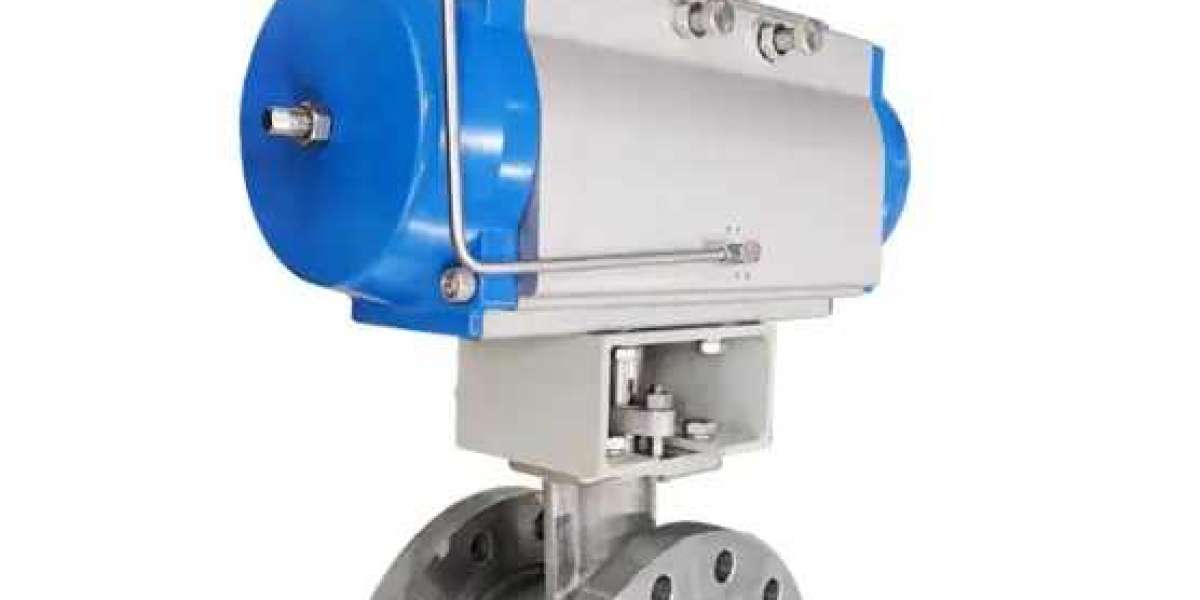Introduction
We are a top-tier control valve manufacturer in China, delivering high-quality valves and control actuators designed to meet a wide range of industrial applications.
Eccentric rotary control valves are essential components in today’s advanced fluid control systems, delivering precise regulation of gases and liquids across a wide range of industrial applications. Unlike traditional linear motion valves, these valves operate using a quarter-turn (90°) rotary motion to manage flow, offering enhanced efficiency, durability, and adaptability. Their robust construction and precise modulation capabilities make them a preferred choice for everything from general flow isolation to demanding control applications.
This article delves into the core operating principles of eccentric rotary control valves, highlighting their design benefits, key performance features, and their suitability for challenging service environments.
What Is an Eccentric Rotary Control Valve?
An eccentric rotary control valve is a quarter-turn valve featuring a closure element—typically a disc or plug—that rotates on an offset shaft. This "eccentric" design allows the disc to move away from the seat during opening, minimizing direct contact, reducing friction, and decreasing wear over time. The result is smoother operation and enhanced longevity, especially in severe service conditions involving high pressure, temperature, or abrasive media.
Working Principle
The functionality of an eccentric rotary valve is centered on a rotary actuation mechanism that moves the disc via an offset shaft:
Opening: The disc pivots away from the seat without sliding against it, drastically reducing friction and wear.
Flow Modulation: The valve’s opening angle directly controls flow rate, allowing precise throttling.
Closing: The disc re-engages with the seat, and the eccentric motion ensures a tight seal with minimal impact.
This mechanism eliminates the sliding contact common in linear valves, improving sealing reliability and extending the valve’s operational life.
Key Features and Advantages
1. Reliable Operation in Demanding Conditions
Eccentric rotary valves are engineered for consistent performance even in aggressive environments:
Self-centering seat seal ensures optimal alignment and tight sealing during each cycle.
Automatic lapping effect enhances sealing as the disc naturally conforms to the seat surface.
Protected metal bearings are sealed from external contaminants to support smooth rotation and reduce the risk of mechanical failure.
These features contribute to exceptional durability and stable performance across various fluid control systems.
2. Extended Seat and Component Life
A primary advantage of eccentric design is the reduction of wear on sealing surfaces:
Eccentric plug motion minimizes contact during operation, significantly decreasing seat erosion.
High-performance seat materials include:
316 stainless steel
A105 forged carbon steel with hard-faced carbide
Industrial-grade ceramics
These materials resist corrosion, erosion, and thermal stress. Lower closure force also reduces actuator strain and extends seat life, making the valve suitable for high-cycle or abrasive media applications.
3. Flexible Installation and Integration
Designed for user-friendly implementation, eccentric rotary control valves offer several mounting options:
Flanged body versions for standard piping compatibility and secure mounting.
Flangeless (wafer-type) bodies for compact installations where space or weight is a concern.
Hidden flange screw designs provide a streamlined appearance and added protection in corrosive environments.
Precision machining ensures easy alignment and reliable sealing during installation, enhancing system integrity.
4. Bidirectional Sealing and Versatile Flow Control
These valves can handle flow in either direction without compromising seal performance:
Dual-direction sealing is enabled by the dynamic seat and robust plug design.
Outlet protection during reverse flow diverts turbulence away from the sealing surface, reducing wear and erosion.
Quarter-turn operation minimizes internal scouring, preserving critical components even under turbulent or abrasive conditions.
This versatility simplifies system design and valve placement, offering greater flexibility for engineers and installers.
Applications
Due to their resilience and precise control, eccentric rotary control valves are widely used in:
Chemical and Petrochemical Processing – for managing corrosive and high-temperature media.
Power Generation – in steam and water circuits requiring dependable modulation.
Water and Wastewater Treatment – for controlling large volumes under fluctuating pressures.
Oil and Gas Industry – for flow control in upstream, midstream, and downstream systems.
Pulp and Paper Mills – especially in slurry and fiber-rich lines where abrasion resistance is critical.
Their ability to perform under harsh conditions makes them ideal for both control and isolation duties.
Customization and Actuation Options
Modern eccentric rotary valves are compatible with a variety of actuation and automation systems:
Manual gear operators for simple open/close functionality.
Electric actuators for integration with process control systems.
Pneumatic actuators ideal for hazardous or explosion-risk environments.
Smart positioners and sensors provide accurate modulation and real-time system feedback.
Additional accessories such as solenoids, limit switches, and air filters can be incorporated to support safety, diagnostics, and advanced automation.
Maintenance and Longevity
Eccentric rotary valves are designed for ease of service and long-term reliability:
Low operating torque reduces actuator wear and energy consumption.
Minimal friction leads to longer service intervals and fewer breakdowns.
Replaceable internal components like seats and seals can be serviced without removing the valve body from the pipeline.
This design minimizes downtime and supports efficient plant maintenance operations.
Conclusion
Eccentric rotary control valves combine precision control, long-term durability, and versatile installation options in a single, robust solution. Their offset disc design significantly reduces wear, enhances sealing, and lowers maintenance demands. With bidirectional sealing, corrosion-resistant materials, and advanced automation capabilities, these valves meet the evolving needs of modern fluid control systems.
Whether used in new installations or retrofitted into existing systems, eccentric rotary control valves offer enhanced reliability, lower operational costs, and superior performance across a range of demanding applications.Know more about Google SEO Directory


